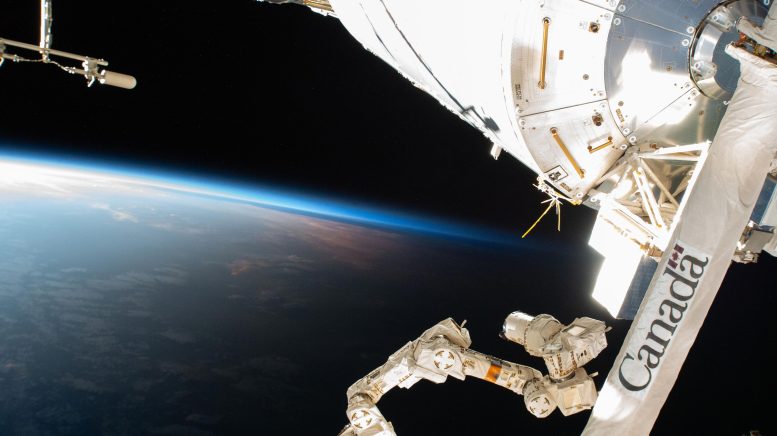
Orbital sunset envelopes Earth as the International Space Station orbited 262 miles above southern Africa. In the foreground is the Canadarm2 robotic arm. Credit: NASA
Equipment installs, health investigations, and training occupied the schedule aboard the International Space Station (ISS) on Tuesday as the seven orbital residents near the arrival of three crew members and a cargo delivery.
NASA’s SpaceX 30th commercial resupply mission to the station is scheduled for launch at 4:55 p.m. EDT on Thursday, March 21 from Space Launch Complex 40 in Florida. The Dragon cargo craft will deliver food, supplies, and new science investigations to the crew, including a set of sensors for the free-flying Astrobee robots and a new botany experiment to examine how two types of grass capture carbon dioxide from the atmosphere. Dragon will autonomously dock to the zenith port of the Harmony module at 7:30 a.m. Saturday, March 23.
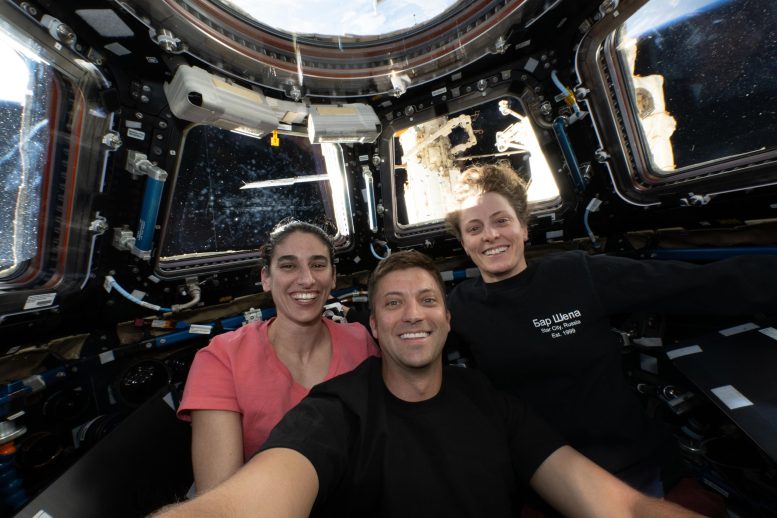
NASA astronauts (from left) Jasmin Moghbeli, Matthew Dominick, and Loral O’Hara pose for a selfie inside the International Space Station’s cupola, or “window to the world.” Credit: NASA
Upcoming Arrivals and Experiments
Ahead of Dragon’s liftoff, three crew members—NASA astronaut Tracy Dyson, cosmonaut Oleg Novitsky, and Flight Engineer Marina Vasilevskaya of Belarus—will launch from the Baikonur Cosmodrome in Kazakhstan at 9:21 a.m. on Thursday, March 21. The international crew will take a short ride to the station, docking only a few hours later at 12:39 p.m., before opening the hatch and joining the Expedition 70 crew in microgravity. Dyson will begin a six-month microgravity research mission once aboard, while Novitsky and Vasilevskaya will spend 12 days on station before departing back to Earth with NASA astronaut Loral O’Hara.
Aboard station, the crew is back to work following a few days off-duty. Throughout the day, O’Hara and two of her NASA crewmates, Michael Barratt and Matthew Dominick, completed a round of SpaceX Dragon rendezvous training ahead of Dragon’s cargo arrival.
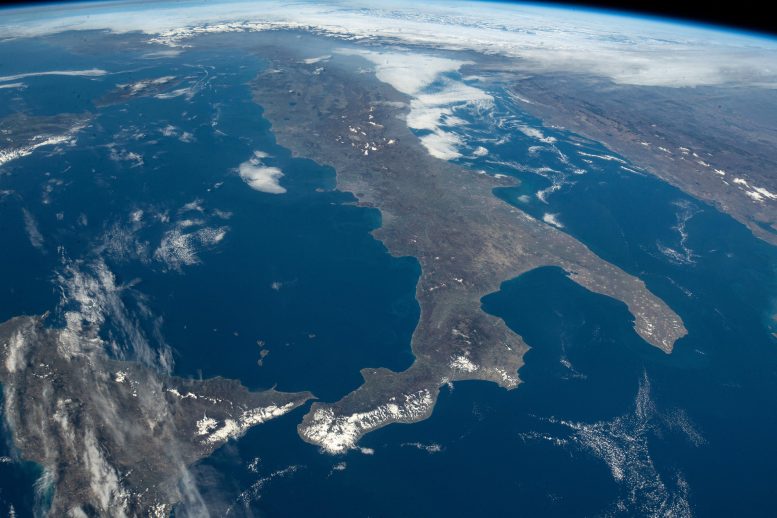
The boot of Italy and the Mediterranean Sea were photographed by NASA astronaut Loral O’Hara as the International Space Station soared 260 miles above. Credit: NASA
Research and Maintenance on ISS
In the morning, Barratt assisted O’Hara with a blood sample collection for the CIPHER investigation. O’Hara then moved on to complete additional CIPHER tasks, including a Robotics On-Board Trainer research session to assess her cognitive performance and spatial cognition changes while conducting robotics maneuvers such as grappling and docking a spacecraft. CIPHER, or Complement of Integrated Protocols for Human Exploration Research, is an all-encompassing, total-body approach that examines how humans adapt to spaceflight.
Later on, Barratt installed the Space Automated Bioproducts Lab for future life, physical, and material science investigations. Dominick installed a new humidifier in the Cell Biology Experiment Facility for upcoming Space Organogenesis research. This investigation uses the microgravity environment to enable 3D cell growth to promote regenerative technology that could someday help people in need of transplants on Earth.
NASA Flight Engineer Jeanette Epps spent the morning collecting biological samples for the Standard Measures investigation then moved into the Destiny laboratory module to set up the Robotic Arm Repair Satellite (RSat). RSat, installed in the Microgravity Science Glovebox, explores how CubeSats fitted with a robotic arm might be used to repair larger satellites.
Cosmonauts Alexander Grebenkin and Nikolai Chub spent the day working with the Roscosmos water processing system, running a distillation cycle and collecting samples. Commander Oleg Kononenko of Roscosmos donned a belt packed with sensors to monitor blood circulation in microgravity and then practiced his piloting techniques during a Pilot-T session.




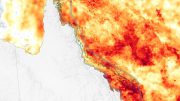


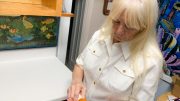

Be the first to comment on "Health Studies and Equipment Setups Precede ISS Crew and Cargo Missions"